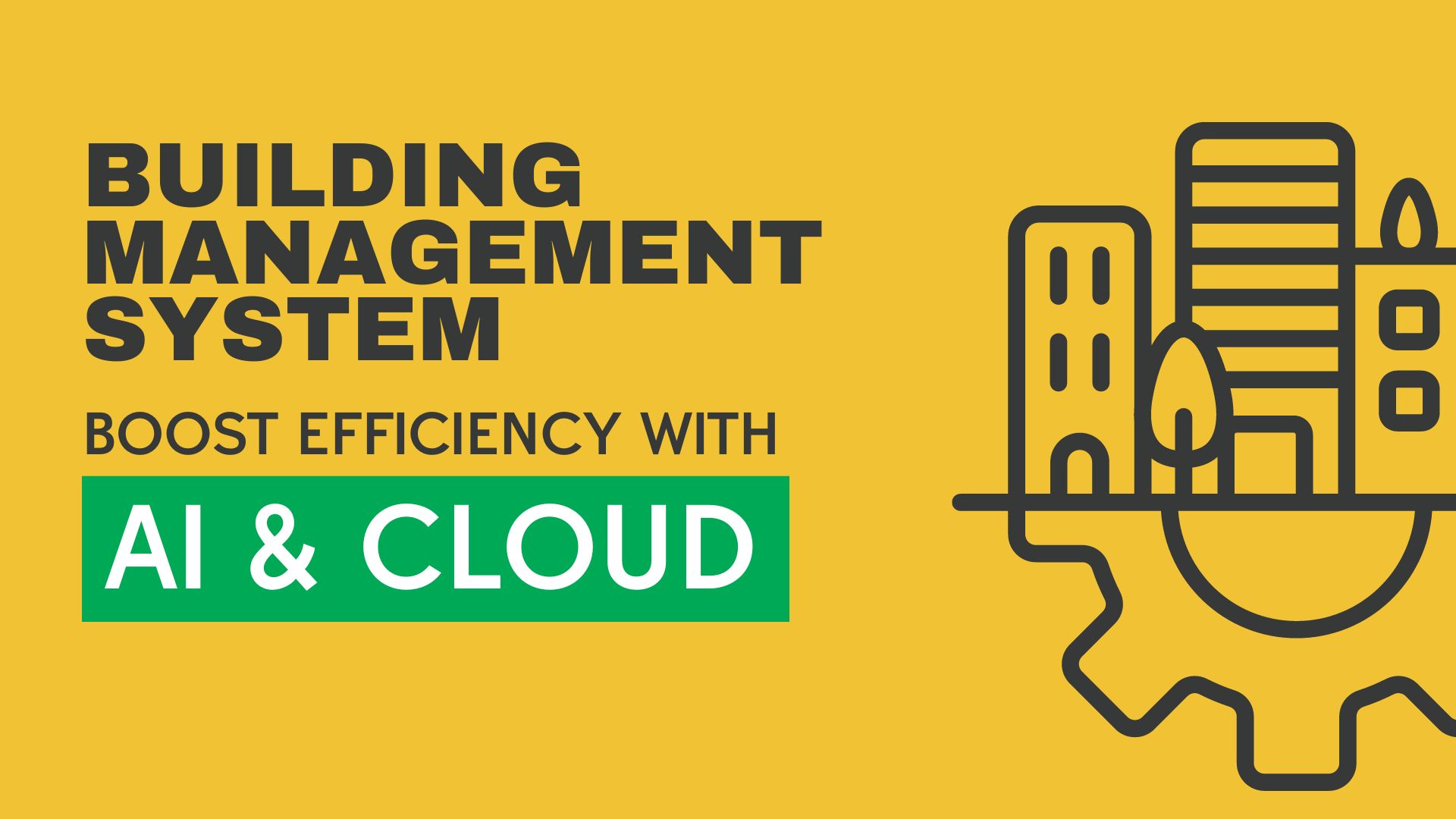Do you ever feel like your building’s energy bills have a mind of their own, increasing costs when you least expect it? You’re not alone. As buildings get older and energy needs increase, older systems can’t keep up. That’s where modern smart management comes in – helping you keep your building at a comfortable temperature without spending too much. Today’s Cloud-integrated AI Driven Building Management Systems (BMS) can make your facility more efficient in ways you might not have thought possible.
The Growing Importance of Energy Efficiency and Smart Building Management
With increasing awareness of climate change and the need for sustainable development, both the European Union and the United States have set ambitious targets for improving energy efficiency in buildings. The EU’s Energy Efficiency Directive aims to achieve a 32.5% improvement in energy efficiency by 2030, with building renovations playing a central role.
U.S. Department of Energy’s Building Technologies Office is targeting a 30% reduction in energy use by 2030 through advancements in building technologies, including HVAC systems. These goals underline the pressing need for more efficient energy management across commercial and residential buildings.
With rising pressure to decrease carbon footprints, achieve sustainability goals, and lower operational costs, businesses and facility managers are increasingly turning to advanced technologies to improve how buildings are managed.
Energy efficiency is not just a passing trend; it is becoming a necessity as countries implement stricter regulations and energy costs continue to rise. This shift has fueled the growth of the smart building market, which is expected to reach over $127 billion by 2027, growing at a compound annual growth rate (CAGR) of 12.6%.
The Role of Building Management Systems (BMS)
At the heart of this revolution is the Building Management System (BMS), a technology that has been managing core building functions like heating, ventilation, air conditioning (HVAC), lighting, and security for decades.
Traditional Building Management Systems (BMSs) were typically on-site systems with limited capabilities. They often operated separately, with fixed control based on set schedules or parameters. However, the rise of cloud-based solutions, IoT (Internet of Things) devices, and AI-driven analytics has completely transformed the BMS landscape.
Today’s intelligent BMS platforms are more powerful than ever, integrating multiple building systems into a unified interface accessible from anywhere via the cloud. These systems can dynamically adapt to the changing environment within and around the building, making real-time decisions that enhance efficiency and performance.
According to a recent report, the global BMS market is expected to grow from $10.8 billion in 2022 to $23.6 billion by 2028, representing a CAGR of 14% during the forecast period.
What is a Building Management System (BMS)?
A Building Management System (BMS) is a centralized control system that monitors and manages building functions like HVAC, lighting, and security. Traditionally, BMSs operated with fixed schedules, regulating systems based on predefined parameters, such as turning HVAC systems on and off at specific times.
Challenges of Legacy BMS
Legacy BMS systems have limited flexibility for real-time adjustments due to their static structures. For example, older HVAC systems would run at full capacity during working hours regardless of occupancy, leading to wasted energy in unoccupied spaces. Additionally, traditional BMS systems lack the ability to adapt dynamically to changing building conditions or integrate with other systems, as they rely on local control. Without the integration of cloud-based solutions and advanced analytics, these systems fail to optimize energy use, reduce operational costs, or fully utilize building resources.
Cloud Integration: Elevating Building Management System Performance
Benefits of Cloud-Based Solutions
Integrating Building Management Systems (BMS) with cloud platforms revolutionizes how buildings are controlled and optimized. By moving to the cloud, BMS allows for centralized control, providing facility managers with a single interface to monitor and adjust multiple building systems from anywhere. Cloud integration also ensures scalability, as buildings or additional devices can easily be added without dealing with the entire infrastructure. Most importantly, cloud-connected BMS enables real-time data access, allowing for immediate adjustments based on real-time conditions, improving energy efficiency, and reducing operational costs.
How to Integrate Your BMS into the Cloud
A typical system architecture for integrating BMS into cloud systems includes IoT gateways (like Tridium Niagara or Seeed R1000) interfacing with building devices using protocols such as BACnet, Modbus, or KNX. Data from HVAC, lighting, and security systems is transmitted via gateways to cloud platforms (e.g., Sensgreen Smart Building Platform, Siemens Building X or Honeywell Forge) using protocols like MQTT or HTTPS. The cloud platform enables real-time data analysis, control, and predictive maintenance, leveraging AI and machine learning. Edge computing can be used for local processing to reduce latency and ensure critical functions operate independently of cloud connectivity.

AI Enabled BMS Optimization Use Cases
Demand-Driven HVAC Control with AI
AI optimizes Air Handling Units (AHUs), Variable Air Volume (VAV) systems, Fan Coil Units (FCUs), and thermostats by analyzing data from both the BMS and LoRaWAN sensors. These sensors monitor occupancy, CO₂ levels, and air quality in real time. AI adjusts airflow, cooling, and ventilation dynamically, increasing output in occupied rooms and reducing it when spaces are empty. The system fine-tunes VAV dampers, controls FCU fan speeds, and adjusts thermostat setpoints based on real-time data from the BMS and LoRaWAN sensors, ensuring that HVAC systems respond to both historical patterns and current room conditions for optimal efficiency.
Setpoint Drift Correction
Over time, the settings for heating, ventilation, and air conditioning can change from the best levels. This can happen because people adjust the settings or because the system is not working as well as it should. AI looks at old data from BMS to find patterns. Then it changes the settings to use less energy. For example, in a big office building, AI finds areas where the temperature control is using too much energy. Then AI changes the settings for those areas based on how they have done in the past. This reduces the need for extra heating or cooling without needing more sensors.
Peak Load Shifting
BMS data provides real-time energy consumption insights, allowing AI to shift non-essential loads to off-peak periods. In a retail environment, the BMS reduces cooling in storage areas during peak energy pricing hours and increases it during off-peak times. AI leverages existing energy meter data to optimize HVAC and lighting, cutting costs without compromising comfort.
Equipment Run-Time Optimization
BMS systems track the operational run-time of HVAC units, pumps, and chillers. AI uses this data to distribute workloads efficiently, preventing any single unit from being overworked. In a campus building with multiple HVAC units, AI arranges their run times based on historical performance, optimizing maintenance schedules and extending equipment life.
Unlock the Full Potential of Your Building with Sensgreen
Sensgreen Smart Building Platform is more than just a management tool—it’s the key to transforming your building’s operations through the power of data-driven optimization. By seamlessly integrating with your existing BMS infrastructure, Sensgreen leverages advanced AI algorithms to analyze real-time data from HVAC, lighting, and energy systems. From optimizing setpoints to predictive maintenance, we enable your building to adapt dynamically to changing conditions without additional sensors or hardware. Sensgreen transforms static BMS systems into intelligent, cloud-connected solutions, driving efficiency, cutting energy costs, and future-proofing your building for sustainable operations.



